Bachelor exchange in Buenos Aires
Realizing there were even better things ahead than the things (El Chaltén and its gauchos) we left behind, we took the bus back to El Calafate on Monday morning. On arrival, we booked a tour, and headed out very early the next morning in a tourist van toward the Perito Moreno Glacier. This glacier is one of the 48 glaciers in the Southern Patagonian Ice Field, which is the world’s 3rd largest reserve of fresh water! Besides, it is one of the three glaciers in the Ice Field that is not shrinking, but actually growing in size. As blocks of ice fall off in the front, it expands in the back!
An hour later, we paid the entrance fee upon entering the Parque Nacional los Glaciares, a UNESCO World Heritage Site. Soon after, we arrived at the first lookout point facing the glacier, with viewing platforms on various levels. From there we admired the huge blocks of ice breaking off the glacier, splashing into the water.
It was captivating. The process created endless entertainment, as each piece that fell generated a cracking sound so loud we could hear it from any part of the viewing platform. The sizes were overwhelming: the pieces falling ranged in size from a small car to a small building! We easily spent an hour walking around the decks watching the ice calving, and trying to get a full picture of the glacier (which was about impossible even using the panorama camera).
Jan Ko
11 chapters
15 Apr 2020
La maravillosa naturaleza de Patagonia (Part II)
October 26, 2015
|
El Calafate
Realizing there were even better things ahead than the things (El Chaltén and its gauchos) we left behind, we took the bus back to El Calafate on Monday morning. On arrival, we booked a tour, and headed out very early the next morning in a tourist van toward the Perito Moreno Glacier. This glacier is one of the 48 glaciers in the Southern Patagonian Ice Field, which is the world’s 3rd largest reserve of fresh water! Besides, it is one of the three glaciers in the Ice Field that is not shrinking, but actually growing in size. As blocks of ice fall off in the front, it expands in the back!
An hour later, we paid the entrance fee upon entering the Parque Nacional los Glaciares, a UNESCO World Heritage Site. Soon after, we arrived at the first lookout point facing the glacier, with viewing platforms on various levels. From there we admired the huge blocks of ice breaking off the glacier, splashing into the water.
It was captivating. The process created endless entertainment, as each piece that fell generated a cracking sound so loud we could hear it from any part of the viewing platform. The sizes were overwhelming: the pieces falling ranged in size from a small car to a small building! We easily spent an hour walking around the decks watching the ice calving, and trying to get a full picture of the glacier (which was about impossible even using the panorama camera).
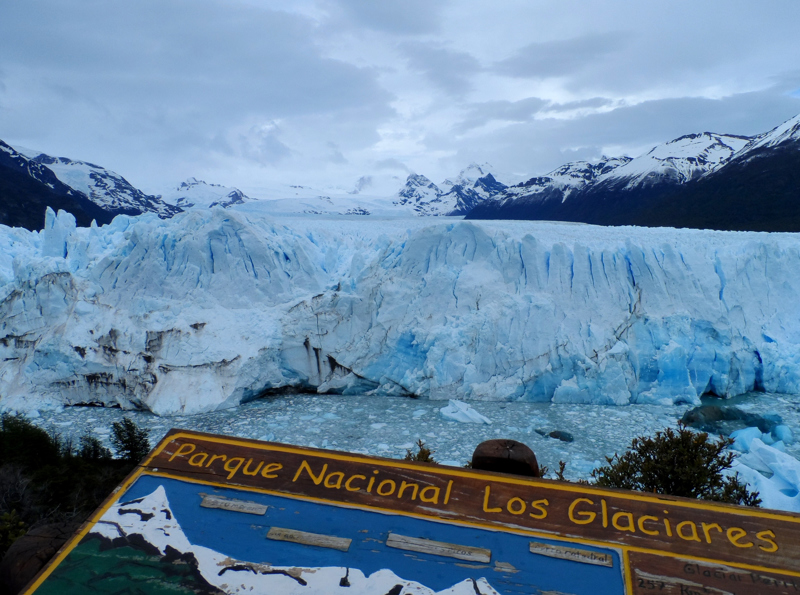
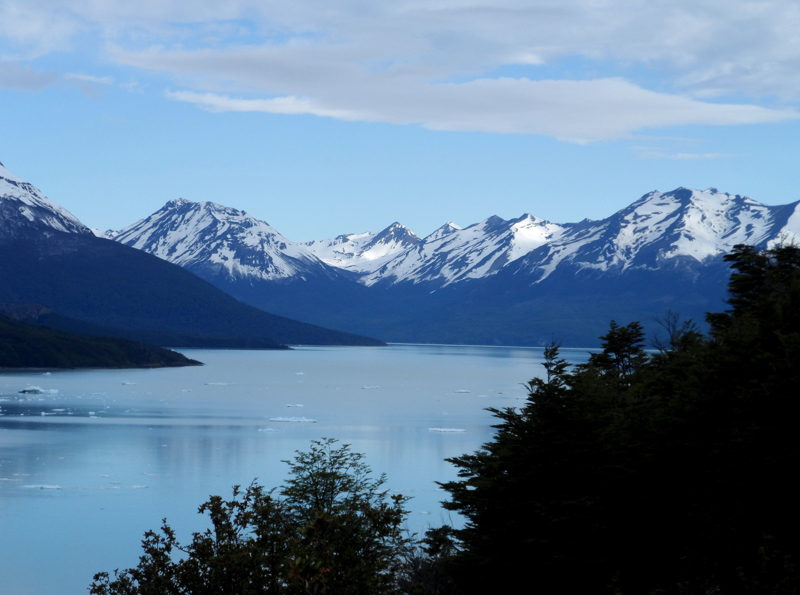
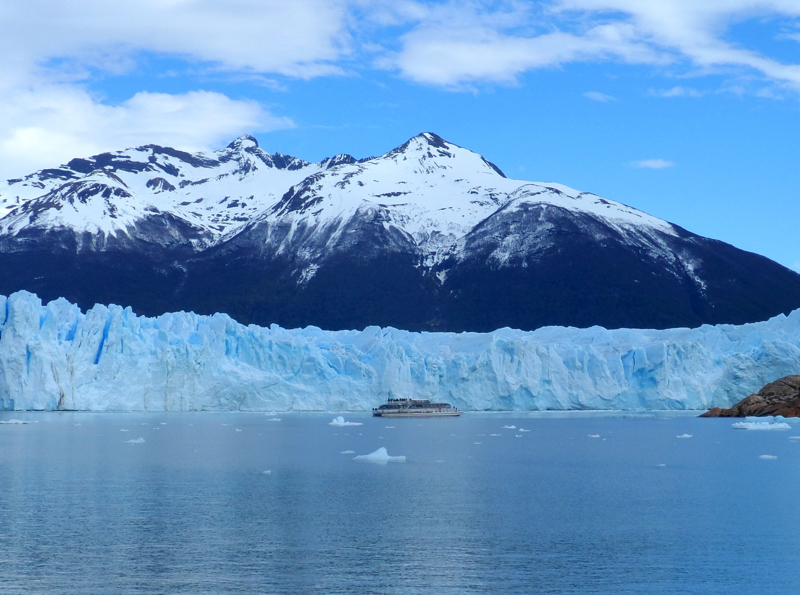
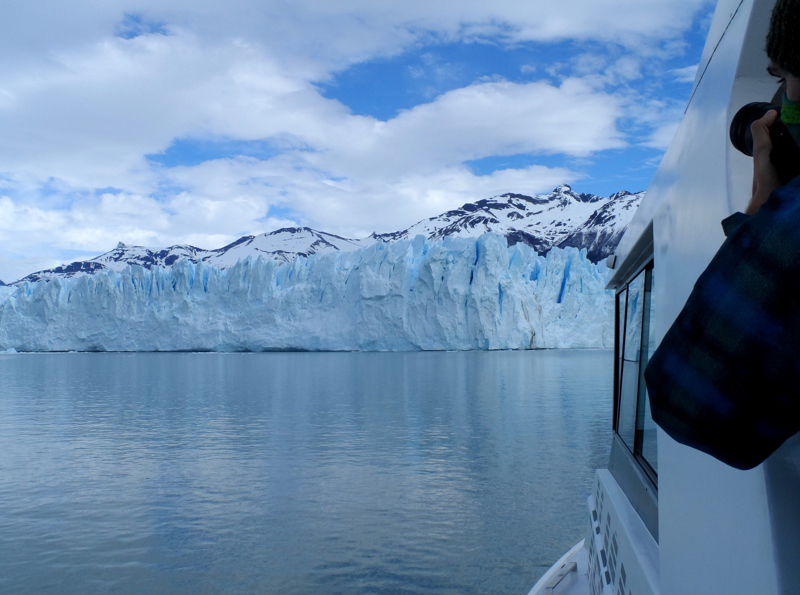
Then we hopped onto a nice tour boat, which took us on a short 20 minute cruise on the lake along the glacier. My excitement grew as I realized that soon we would be walking this giant glacier, which reaches over 70 meters out of the water at its tallest points!
Once we reached the shore on the other side, we disembarked on a small beach. There we split into smaller groups of about 8 people each, based on language preference. After a short instruction talk, we followed our two Spanish (!) speaking guides, and hiked for about an hour in the forest until we reached a point where it was safe to walk onto the ice.
Time to lace up the crampons and harnesses! Our friendly guides suited everyone up, and then we embarked upon our 4 hour Big Ice Trek on the glacier!
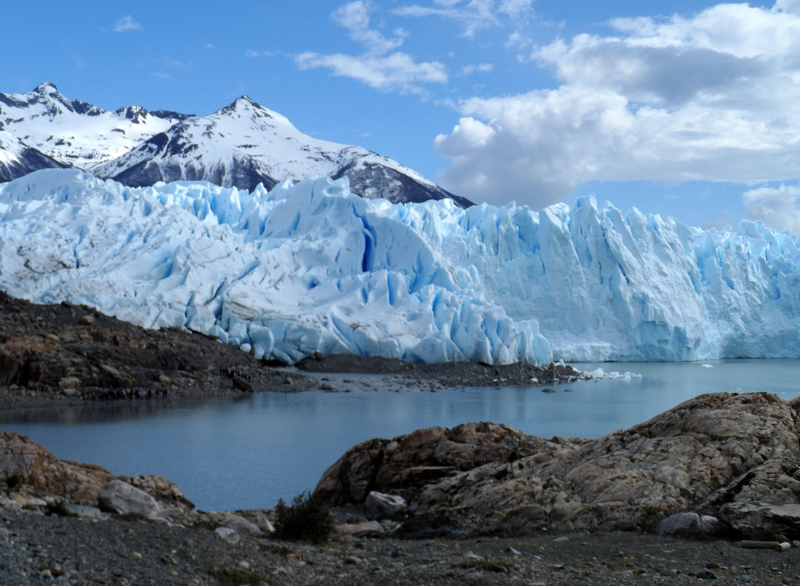
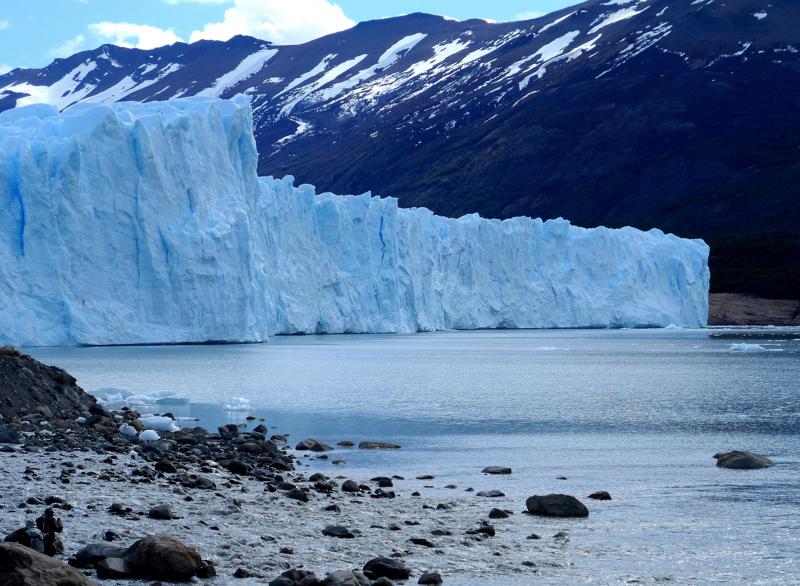
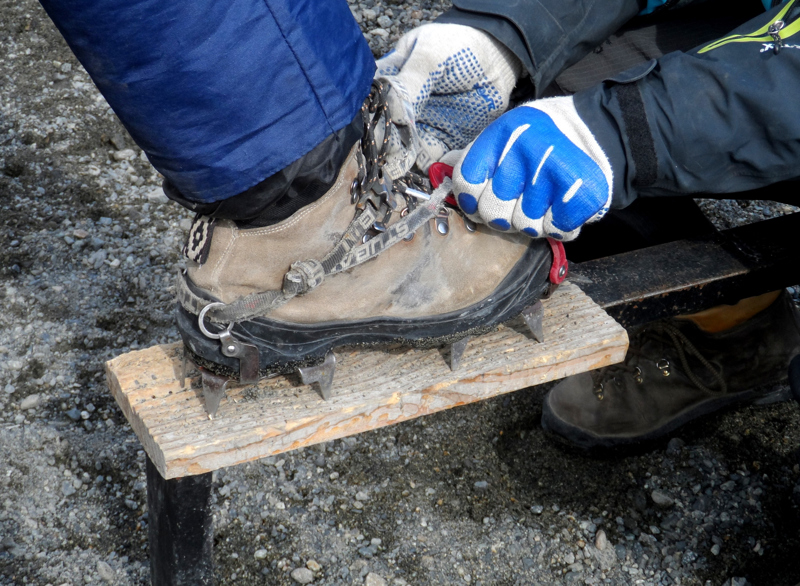
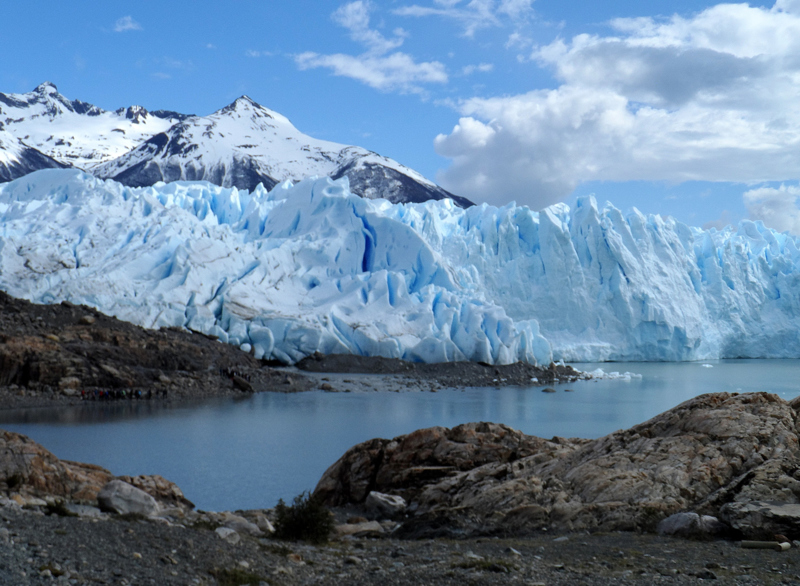
I will never forget my first step onto that glacier – I felt like a little penguin in those crampons, but just as our single file line of tourists grew, so did my confidence. Ten minutes in, and I felt ready to run a marathon on those crampons.
The next two hours were filled with many WOW moments, as we walked on the ridges. The guides were very professional, with one leading the way, digging his pickaxe into the ice to check its thickness, and the other guide giving us a hand when the climb was steep. We felt like real explorers as we jumped over crevasses (cracks formed in the glacier). The cracks were beautiful, very deep blue!
I didn’t know blue water like this existed, I thought it only did in movies such as Ice Age. It was breathtaking, and we even saw some little waterfalls and lakes that had formed in the ice.
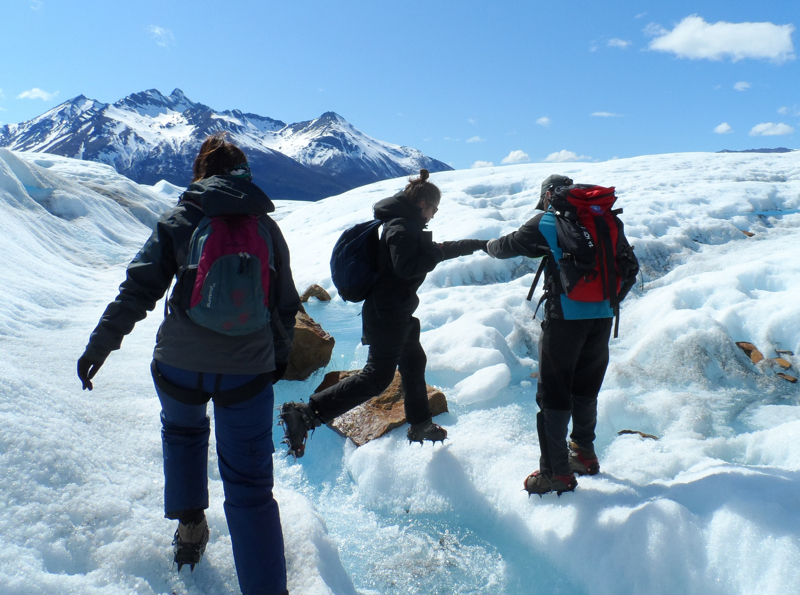
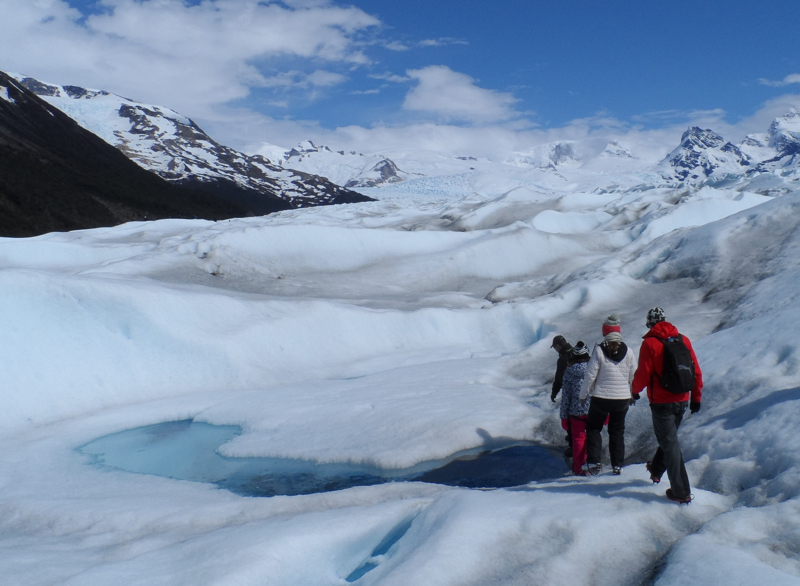
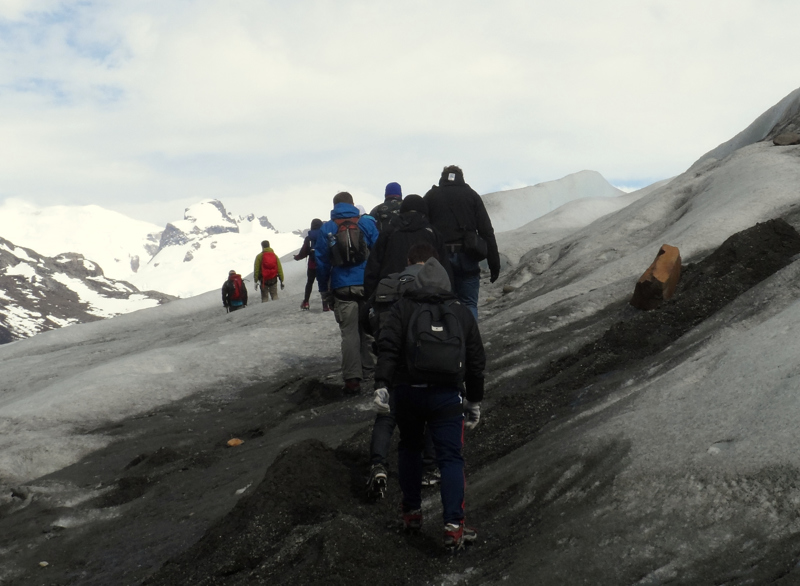
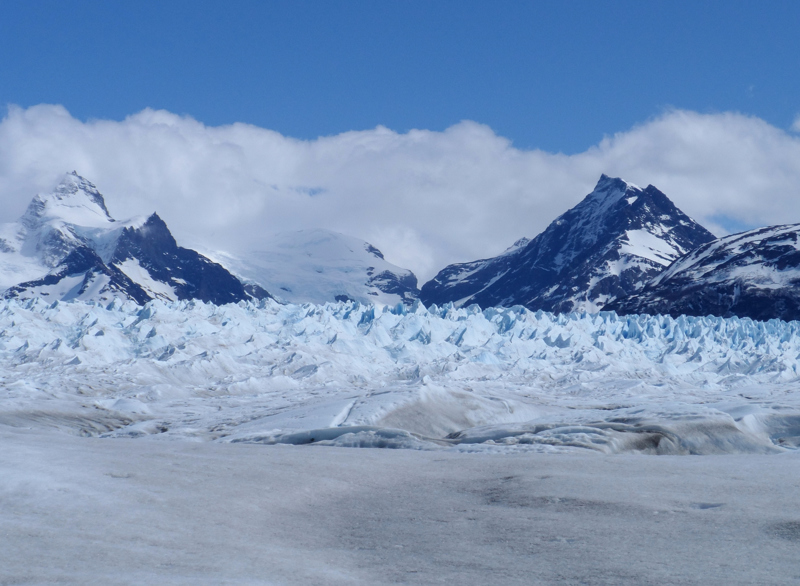
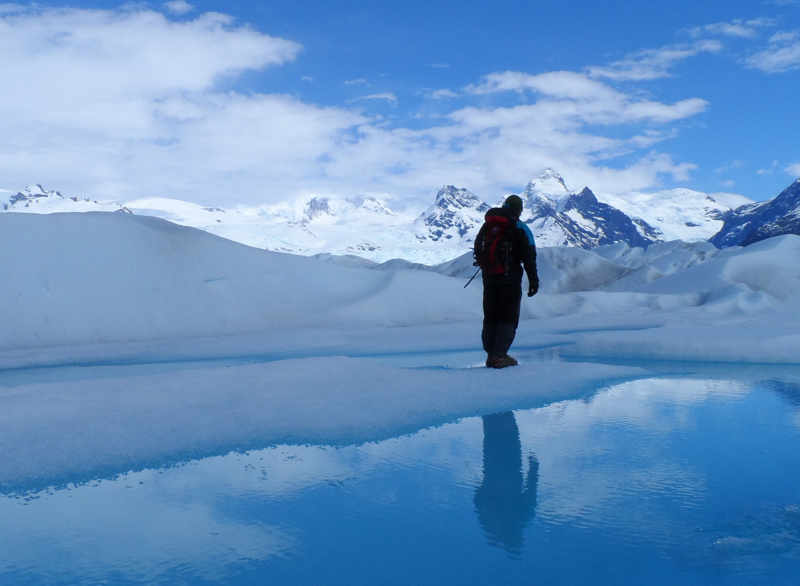
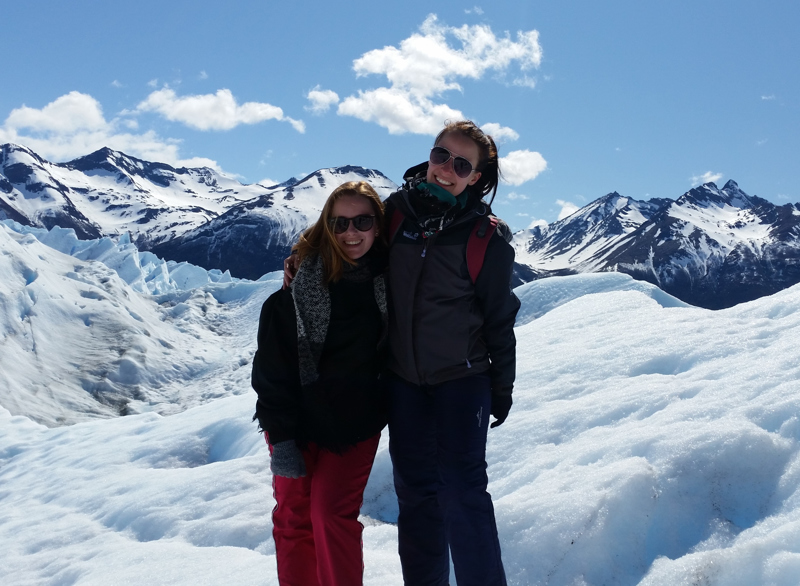
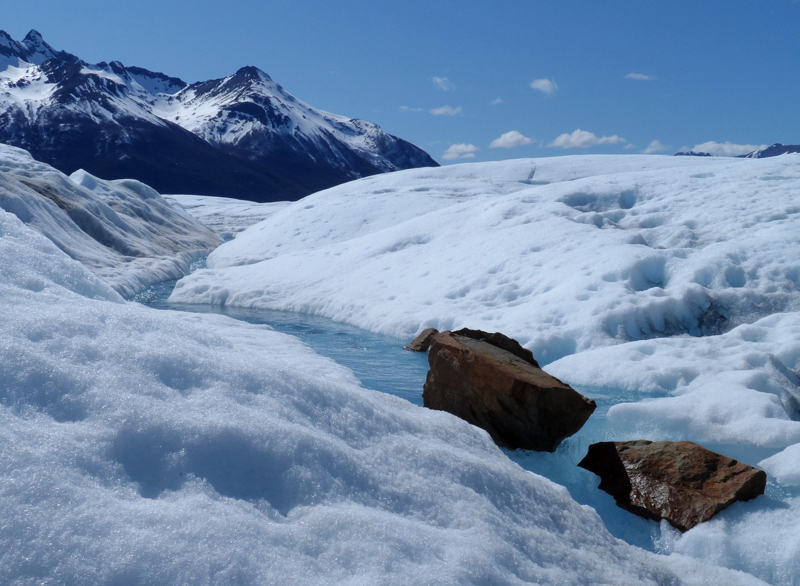
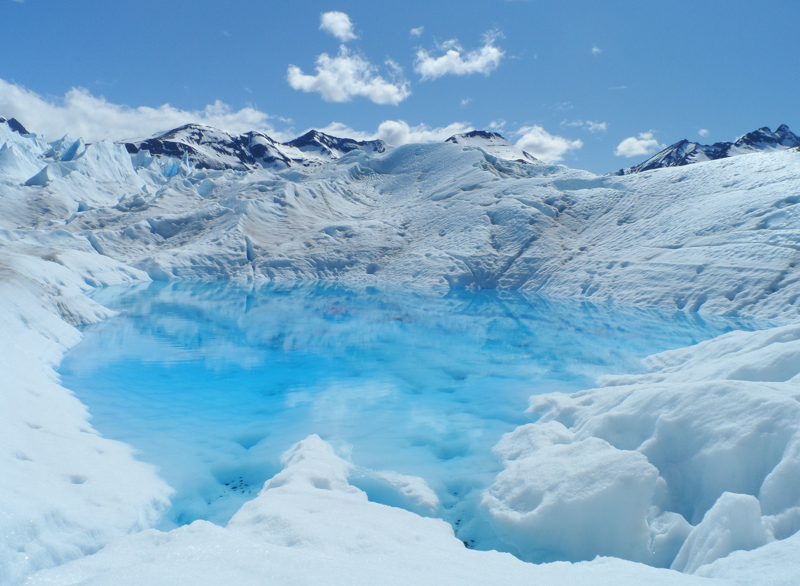
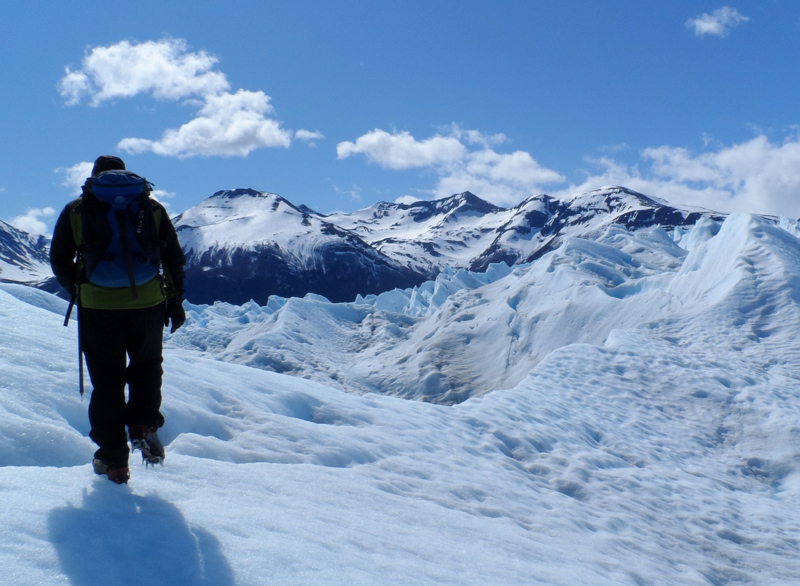

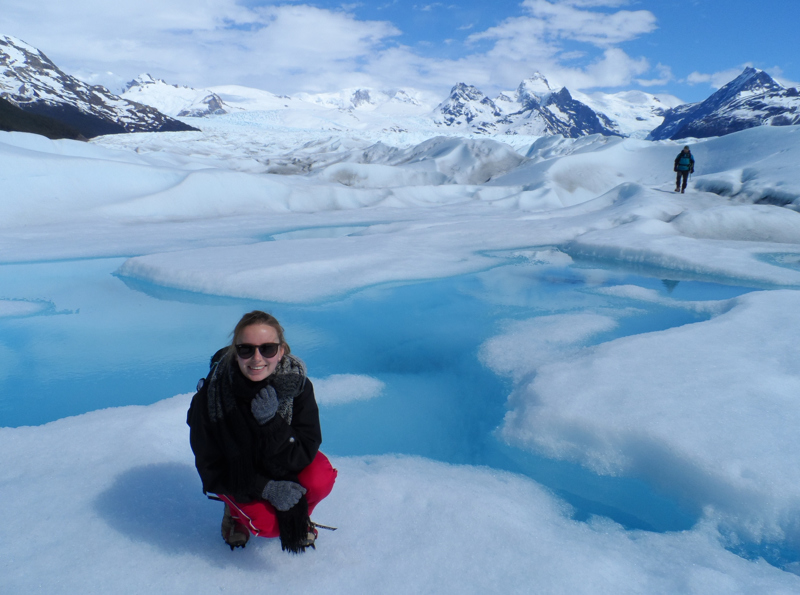
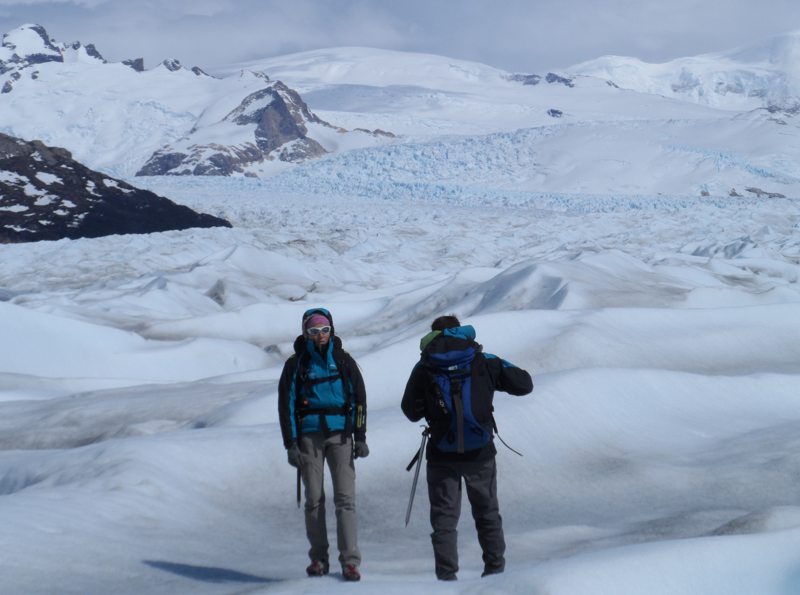
It was incredible to be surrounded by the ice, and still after two hours I couldn’t grasp how massive this field of ice actually was: roughly 30 kilometers in length and 5 kilometers wide! No wonder I didn’t manage to get a full picture of the glacier.. We stopped for a break, and enjoyed our homemade lunch with an incredible view. Our ‘Best. Picnic. Ever.’ in Parque Nacional Quebrada del Condorito two months ago was nothing compared to this!
The return trip lasted about the same amount of time, and along the way we filled our water bottles from the running streams. Back on the mainland we took off our beloved crampons and followed the trail with waterfall back to the boat dock. Over the course of the afternoon, I had become attached to my crampons, and I wish I could have stayed even longer on the ice. Now you might wonder why I could possibly stare at a big chunk of ice forever: it’s because it is just so fascinating!
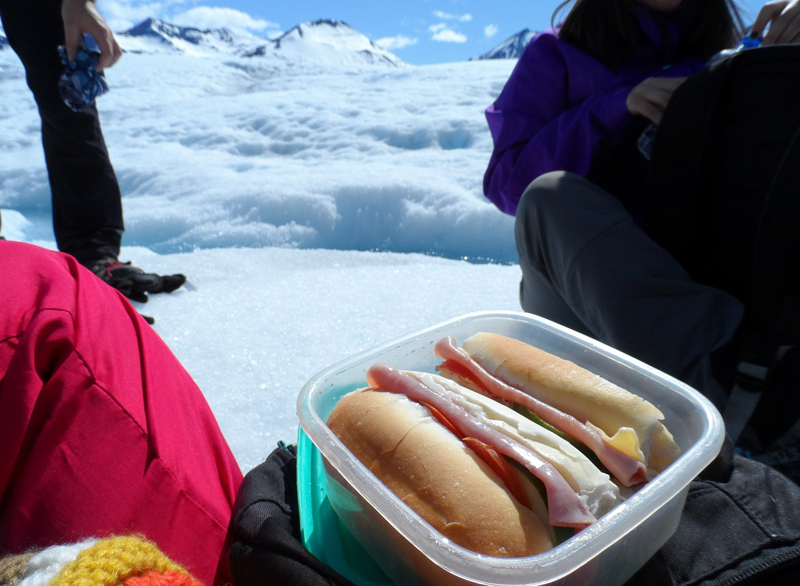
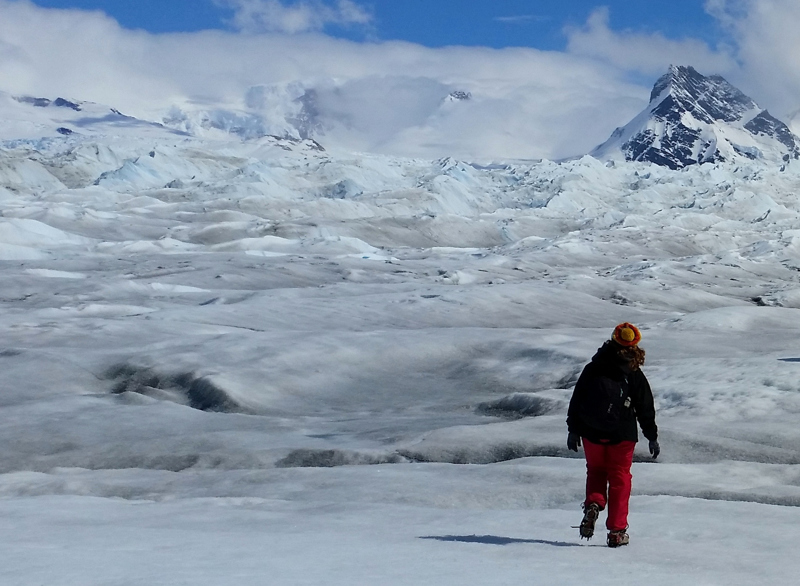
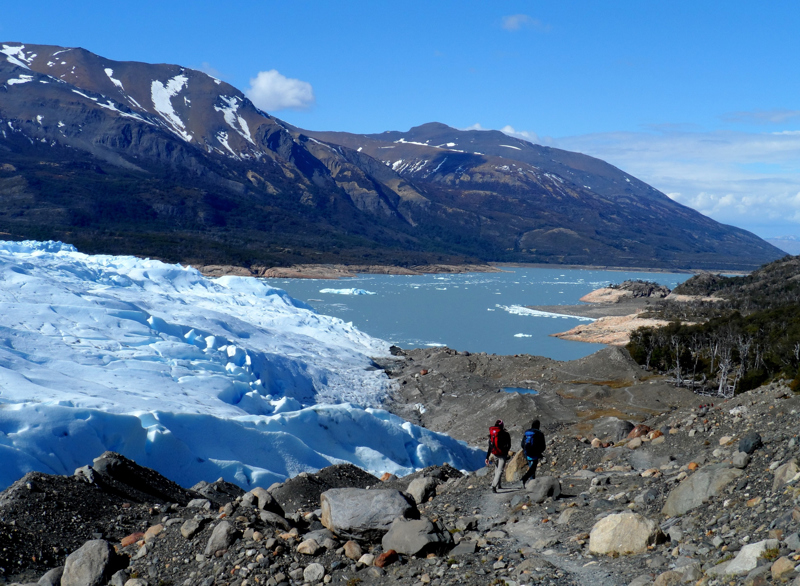
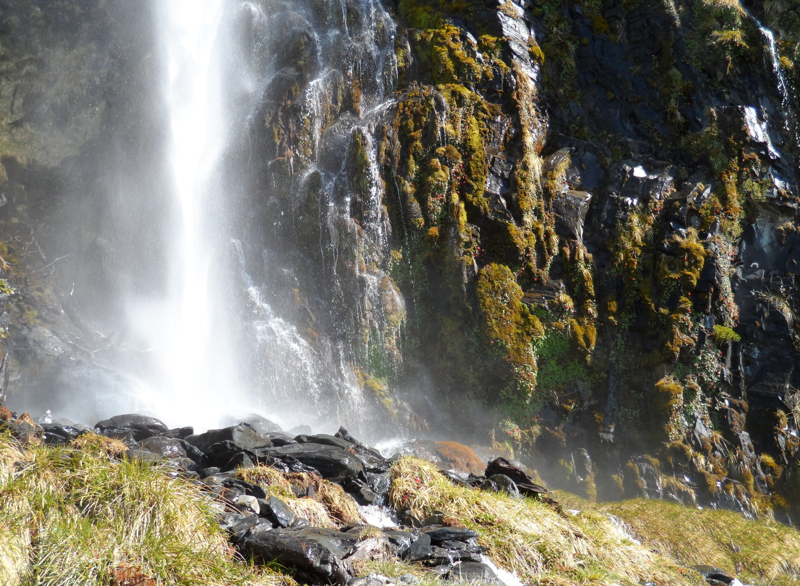
After trekking back to the shore, we took a break and waited for our boat. On the deck, we soaked in the last views of this stationary ice mass before getting on the bus while zipping our glass of Scotch whisky on glacier ice! Not at all a bad way to end the day!
The next day I spent our bus ride to Torres del Paine looking at my pictures from the Big Ice Trek (which by the way do not even capture half the beauty of this place). It made me question whether I should switch careers and become a qualified trek guide. I mean, why not?
Torres del Paine National Park is one of the highlights of Chilean Patagonia. In the park, there are many opportunities to hike, such as the four day W trek. Unfortunately, we didn’t have enough time to do such a trek, and thus decided to book a day tour from El Calafate that included several stops at the main viewing points of the park.
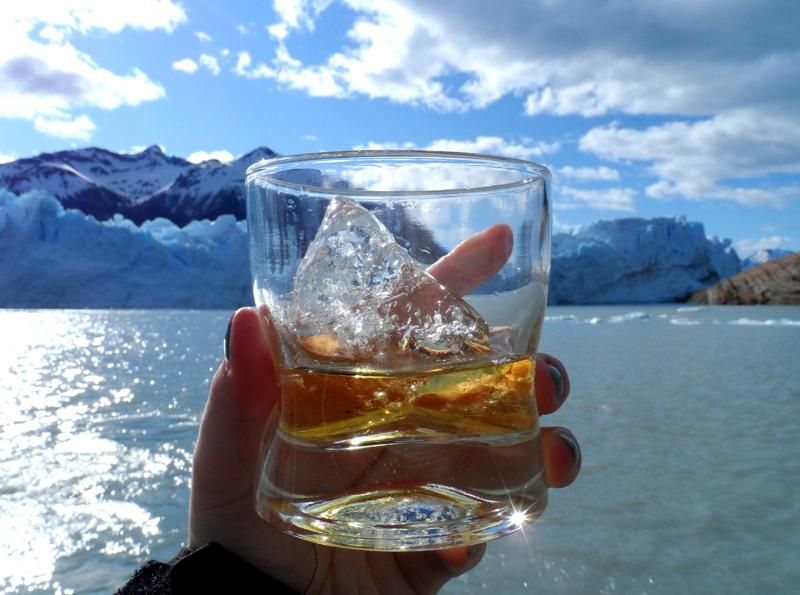
We had to take a long bus ride to get there. The tour started at 06.00 in the morning, and after more or less five hours of speeding through the pampa, we arrived at the Chilean border. Once at the border formalities to exit Argentina and enter Chile were fairly quick (and exciting, because crossing borders means getting new passport stamps!). Then we continued straight into the national park, driving along nearly empty dirt roads. Even though we were surrounded by groups of munching guanaco’s, it felt like we had the park entirely to ourselves.
In Patagonia, the weather can change so quickly it’s not uncommon to experience all four seasons in a single day as the weather can change dramatically within hours. Thus, although it was snowing, we crossed our fingers that the sky would be clear by the time we would reach the Torres, the three granite towers that rise in the centre of the park. For most people these towers are the reason to visit this part of Chile.
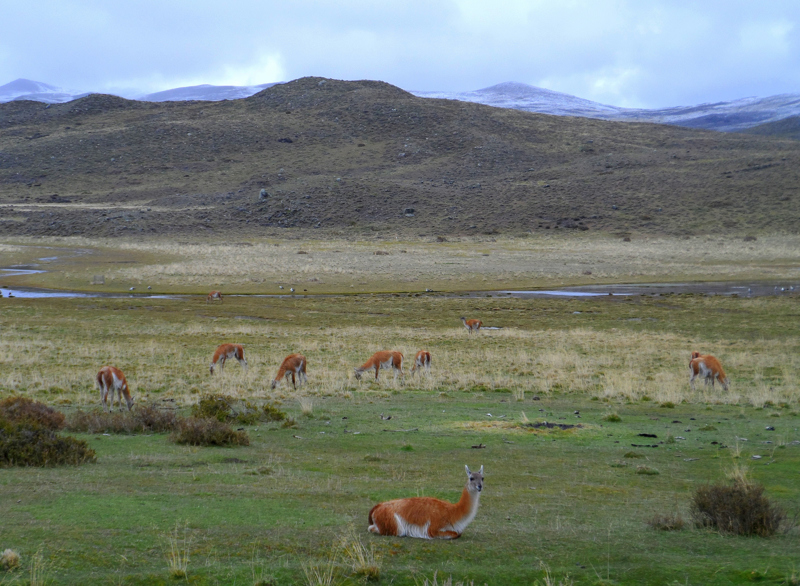
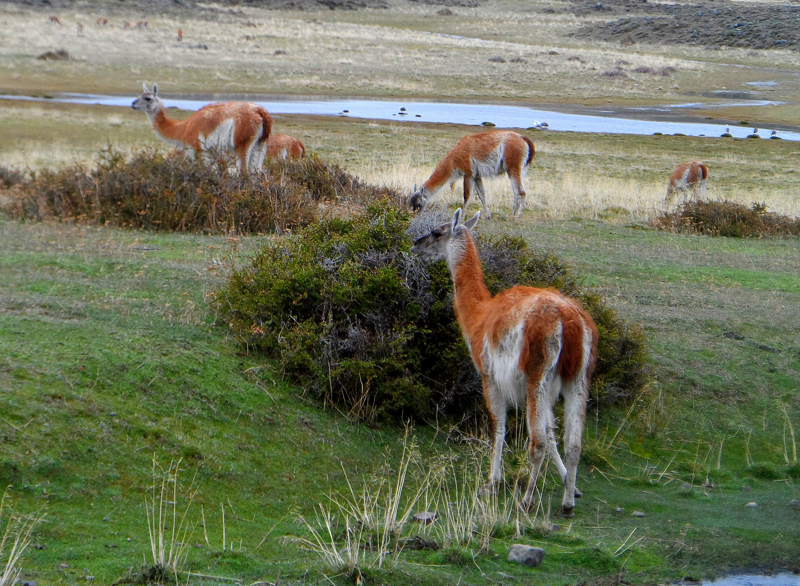
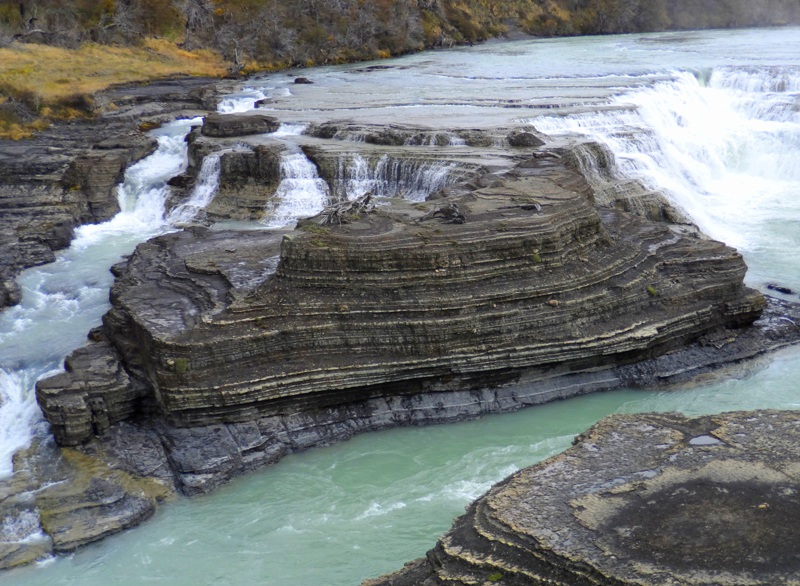
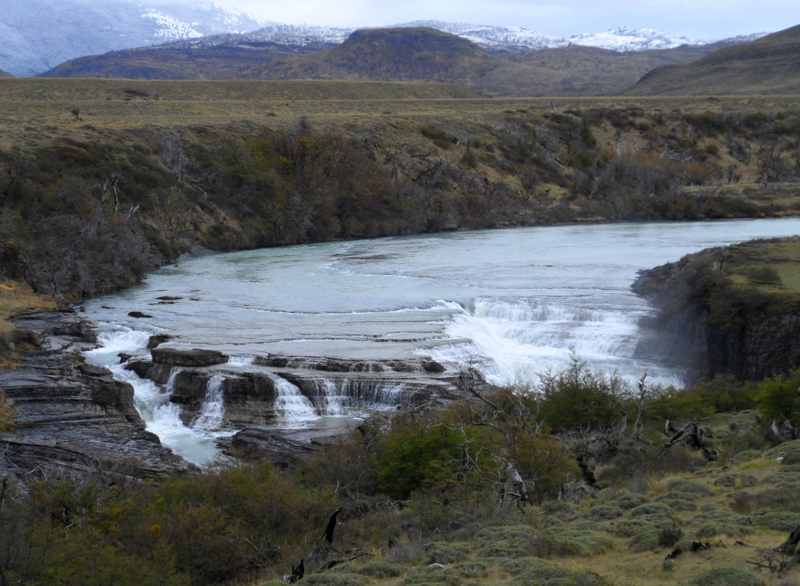
The first stop was the first highlight, Cascada del Rio Paine, an interesting waterfall squeezed into a narrow rocky stretch. We took some pictures, and then quickly returned to the van to warm up. After driving a few more kilometers, we stopped at a viewpoint overlooking a bright blue lake with snow-capped mountains in the background.
In the park, there are 8 refugios (hostels along the trek) which allow for access to the mountains, so that one can complete the entire W trek from a comfortable base. We stopped at one of these refugios for a leisurely lunch. The refugio was located on a little island in the lake, from which one normally has a great view over the Torres. Unfortunately the snow made it impossible to see them, as they were hidden in the fog and clouds, and it stayed that way until we returned to El Calafate.
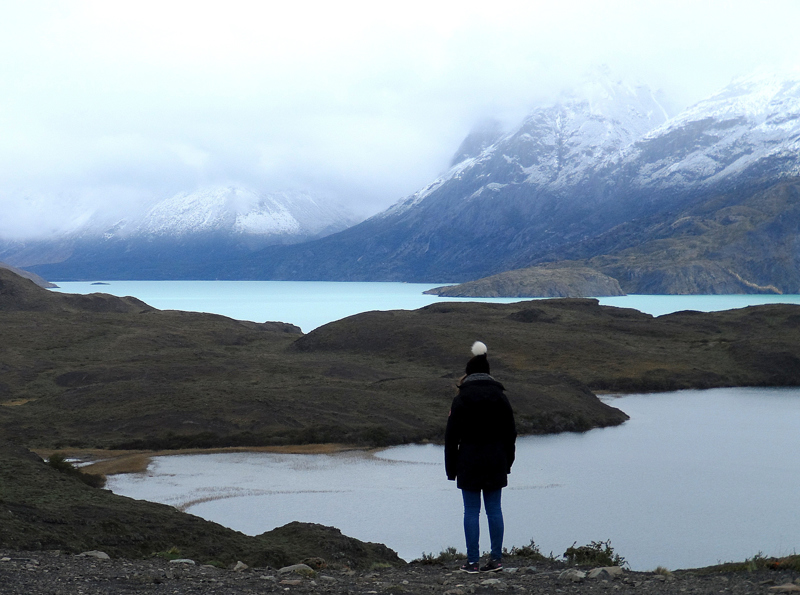
The tour continued on with gorgeous viewpoints every so often until the driver stopped for a little hike, which was really a 30 minute easy walk that led to a lookout above and just to the side of a rushing waterfall called Salto Grande. What made this waterfall stand out to me was the force by which the outflow of the lake funneled into a narrow torrent, and its powder blue colour.
Along the path, I noticed large strips of dead tries, resembling a landscape ravaged by fire. If a spark is picked up by the horrendous Patagonian wind, thousands of trees burn within minutes, and this is exactly what happened a few years ago. These burnt trees we walked by were painful evidence of the terrible forest fires Torres del Paine suffered in 1985, 2005, and 2011. Thanks to these fires, inadvertently caused by tourists, the park office has banned campfires.
Unfortunately, this marked the end of our trip to Southern Patagonia.
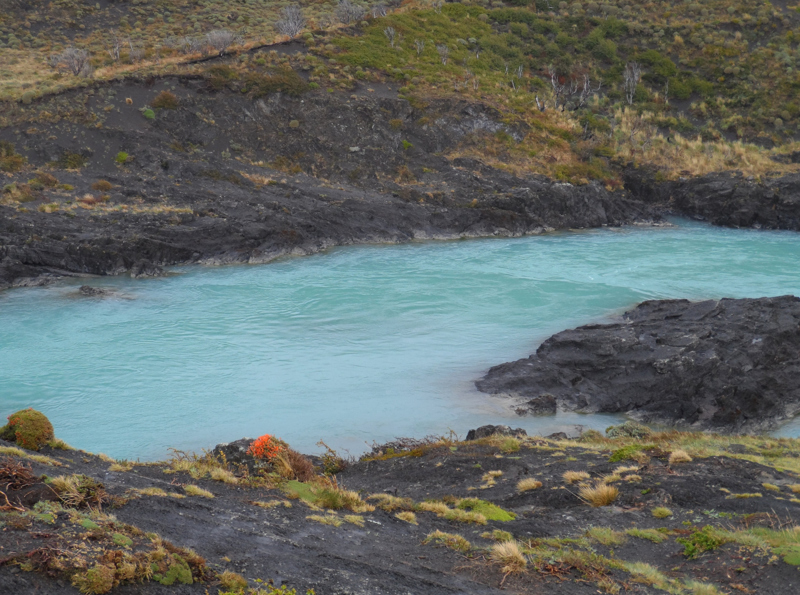
A bitter sweet ending to a trip that without a doubt was the best one I have made in Argentina so far! To be honest, I actually felt quite sad, the kind of sadness only felt at the conclusion of a great adventure. It was an emptiness that soon became fullness.
During our vacation I had come to the realization how little time we have left to do all the things we still wish to do while we are here in Argentina. So, we created an exciting bucket list with things to do.
The spectacular night-time view from the airplane window looking over the illuminated city of Buenos Aires on Thursday evening made me think of a scene in the Princess Diaries movie. ‘Princess, look out the window.. and welcome to Genovia’. Before we knew we were back in town, feeling more ready than ever to enjoy the rest of our time here to the fullest and start crossing off each item on our list!
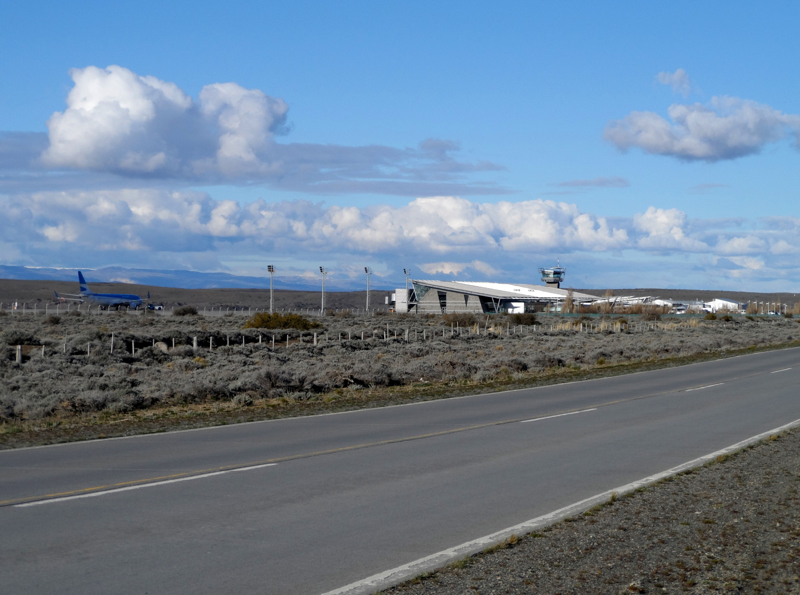
Share your travel adventures like this!
Create your own travel blog in one step
Share with friends and family to follow your journey
Easy set up, no technical knowledge needed and unlimited storage!